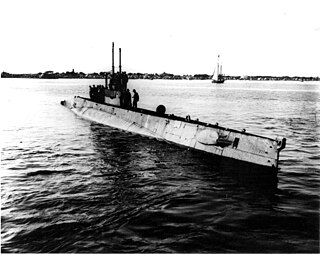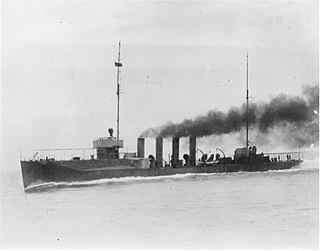
USS Barracuda (SF-4/SS-163), lead ship of her class and first of the "V-boats," was the second ship of the United States Navy to be named for the barracuda.

USS Cochino (SS-345) was a Balao-class submarine in service with the United States Navy from 1945 to 1949. She sank after a battery explosion off Norway, on 26 August 1949. Cochino was named for the cochino, a triggerfish found in the Atlantic.

USS Greer (DD–145) was a Wickes-class destroyer in the United States Navy, the first ship named for Rear Admiral James A. Greer (1833–1904). In what became known as the "Greer incident," she became the first US Navy ship to fire on a German ship, three months before the United States officially entered World War II. The incident led President Franklin D. Roosevelt to issue what became known as his "shoot-on-sight" order. Roosevelt publicly confirmed the "shoot on sight" order on 11 September 1941, effectively declaring naval war against Germany and Italy in the Battle of the Atlantic.

The second USS Menhaden (SS-377) was United States Navy Balao-class submarine. Launched in 1944, she operated out of Pearl Harbor until 1946, then continued in use out of various ports in the Pacific until the 1970s. She was then decommissioned and re-fitted as a remotely controlled, unmanned acoustic test vehicle known as the "Yellow Submarine", until she was scrapped in 1988.

USS Terry (DD-25) was a modified Paulding-class destroyer in the United States Navy during World War I, and later in the United States Coast Guard, designated CG-19. She was the first ship named for Edward A. Terry, and the first ship commanded by future Fleet Admiral and Chief of Naval Operations Ernest J. King.

The second USS Trippe (DD-33) was a Paulding-class destroyer in commission in the United States Navy from 1911 to 1919. She was named for Lieutenant John Trippe. She saw service during World War I.

The first USS Fanning (DD-37) was a modified Paulding-class destroyer in the United States Navy during World War I and later in the United States Coast Guard, designated as CG-11. Her namesake was Nathaniel Fanning.

USS L-2 (SS-41) was an L-class submarine of the United States Navy.

USS L-3 (SS-42) was an L-class submarine of the United States Navy.

USS L-4 (SS-43) was an L-class submarine of the United States Navy.

USS L-9 (SS-49) was an L-class submarine of the United States Navy.

USS L-10 (SS-50) was an L-class submarine of the United States Navy.

USS L-11 (SS-51) was an L-class submarine of the United States Navy.

USS K-5 (SS-36) was a K-class submarine of the United States Navy. Her keel was laid down by the Fore River Shipbuilding Company in Quincy, Massachusetts, under a subcontract from the Electric Boat Company of Groton, Connecticut. She was launched on 17 March 1914 sponsored by Mrs. Warren G. Child, and commissioned on 22 August.

The O'Brien class of destroyers was a class of six ships designed by and built for the United States Navy shortly before the United States entered World War I. The O'Brien class was the third of five classes of destroyers that were known as the "thousand tonners", because they were the first U.S. destroyers over 1,000 long tons (1,016 t) displacement.

USS O'Brien was the lead ship of O'Brien-class destroyers built for the United States Navy prior to the American entry into World War I. The ship was the second US Navy vessel named in honor of Jeremiah O'Brien and his five brothers Gideon, John, William, Dennis, and Joseph who, together on the sloop Unity, captured a British warship during the American Revolutionary War.

USS Ericsson was an O'Brien-class destroyer built for the United States Navy prior to the American entry into World War I. The ship was the second U.S. Navy vessel named in honor of John Ericsson, the Swedish-born builder of the ironclad warship USS Monitor during the American Civil War.

Submarine Squadron 4 was raised by the United States Navy in 1930. Since 9 July 1997, the squadron has been based at the Naval Submarine Base New London, Groton, Connecticut, United States of America.

The third USS Falcon, (AM-28/ASR-2) was a Lapwing-class minesweeper in the United States Navy. She later became a submarine rescue ship.

SM U-111 was one of the 329 submarines serving in the Imperial German Navy in World War I. She took part in the First Battle of the Atlantic.



















